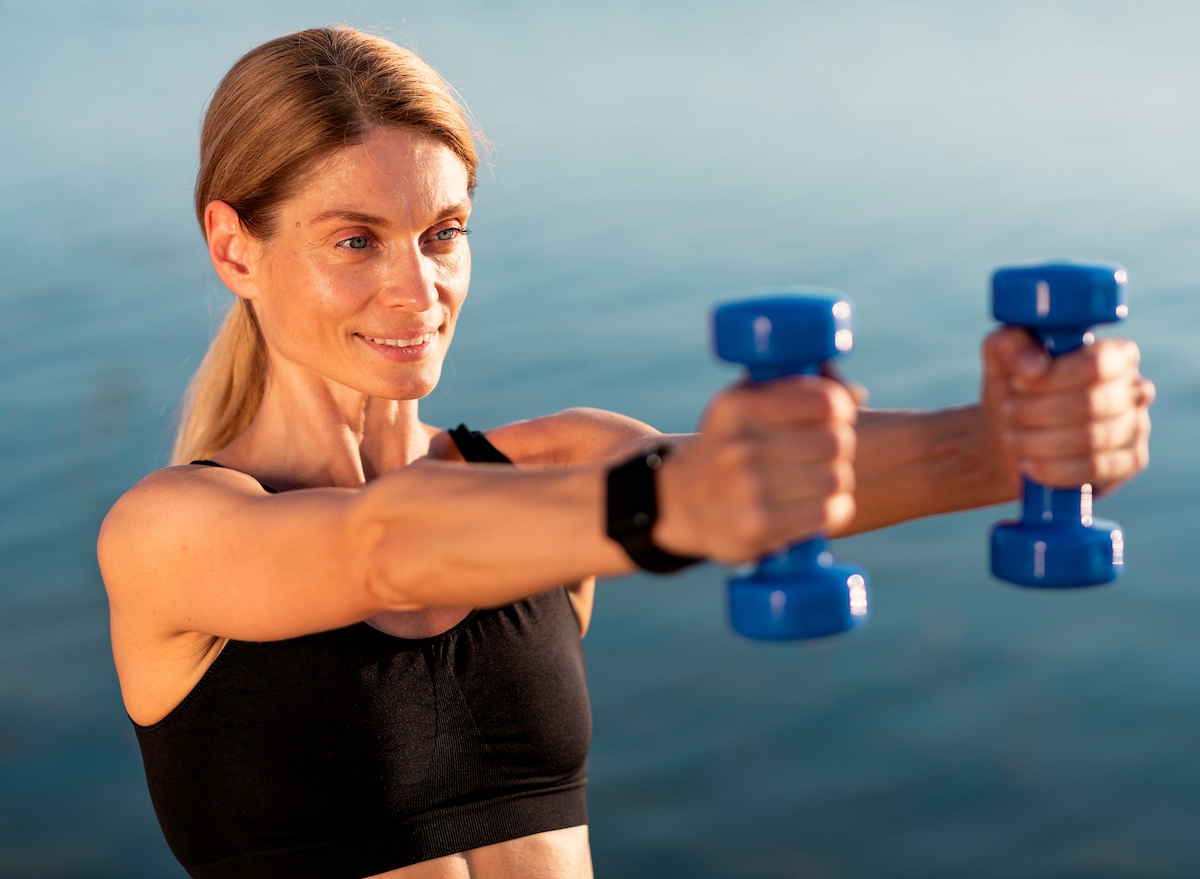The #1 Anti-Aging Workout You Should Have Started Yesterday’ One expression you’ve probably heard before that rings true when it comes to aging is “You’re only as old as you feel.” Another truth? How well you take care of yourself will have a bearing on how you look—and feel—as you grow older. To ensure you feel youthful inside and out, we have the #1 anti-ageing workout you should have started yesterday. That’s right—it’s total crunch time.
To learn the best routine, Eat This, Not That! reached out to Mike Bohl, MD, MPH, ALM—a member of our Medical Expert Board and a certified personal trainer and nutrition coach who has helped develop the Body Program at Ro, who explains, “There are a lot of different components of anti-aging. When we think about anti-ageing, we could be talking about physical appearance, mobility and overall functionality, aging on a cellular level, or even something else.”
With this in mind, there are several things to consider when choosing the absolute best routine to slow down aging. For instance, if your goal is to integrate a solid workout into your daily routine, you’re already off to a great start. “Crafting the best anti-aging workout, then, involves piecing together many different types of exercise to combat what we consider ‘aging’ from multiple angles,” Dr. Bohl says. “Aging gracefully isn’t just about looking young—it’s about feeling good in your body. And a regular exercise routine can help you get there.”
The #1 Anti-Aging Workout You Should Have Started Yesterday
By performing strength training, cardio, flexibility training, and balance training, you can address aging from several directions. Combining all of them in a well-rounded workout will improve muscle and bone mass, cardiovascular health, cellular aging, flexibility, and balance, Dr. Bohl explains. “This can help allow you to continue doing everything you love into older age,” he adds.
Here is the #1 anti-aging workout that covers it all. And for more inspiration on how to stay healthy and fit as you grow older, check out The Best Cardio Exercises To Boost Your Endurance as You Age.
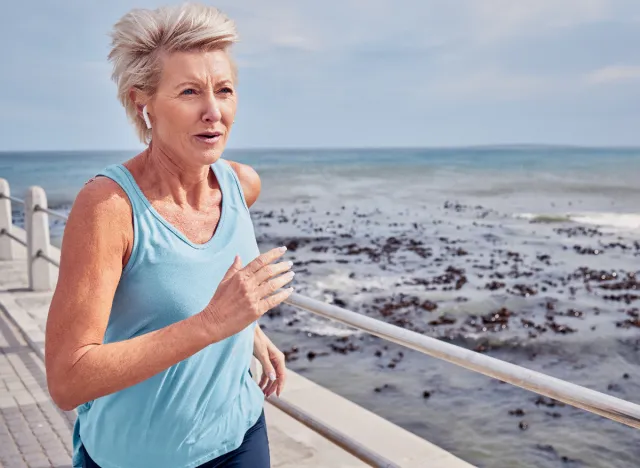
Whether you enjoy swimming, biking, running, hiking, or HIIT (high-intensity interval training), cardio of any kind is truly one of the best forms of exercise you can add to your day when it comes to anti-aging. According to Dr. Bohl, “Some research suggests that cardio exercise has anti-aging effects at the cellular level. Additionally, cardio is great for improving blood flow and oxygen delivery throughout the body and can help you maintain endurance into older age.”
It’s important to aim for 75 minutes of vigorous-intensity aerobic exercise or a minimum of 150 minutes of moderate-intensity aerobic exercise each week. “This could be using an elliptical machine or doing a HIIT exercise for 30 minutes five days a week, or it could be swimming laps for 25 minutes three days a week,” Dr. Bohl suggests.
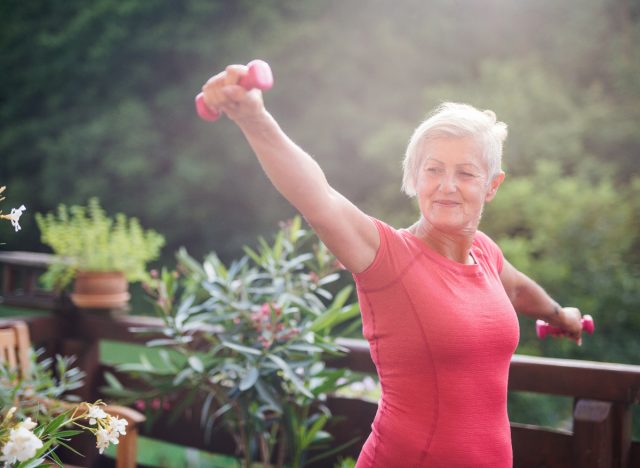
When it comes to preserving your bone density and muscle mass, strength training is a must, as both your bones and muscles decrease as you age. “A solid anti-aging workout includes at least two days a week of strength training—and you can do even more if you split your routine to focus on different parts of the body each day. For a two-day-a-week routine, do exercises from head to toe using selectorized machines, cables, or free weights—whatever you’re most comfortable with,” Dr. Bohl recommends.
An excellent strength training regimen for your entire body includes arm extensions, bicep curls, chest presses, overhead presses, pull-ups, rows, leg presses, sit-ups, leg curls, calf raises, and leg extensions.
If you are working out three days each week or more, Dr. Bohl suggests, “Spend one day focusing on your ‘push’ muscles (triceps, chest, and shoulders), one day focusing on your ‘pull’ muscles (biceps, upper back, and lats), and one day focusing on your core and legs.”
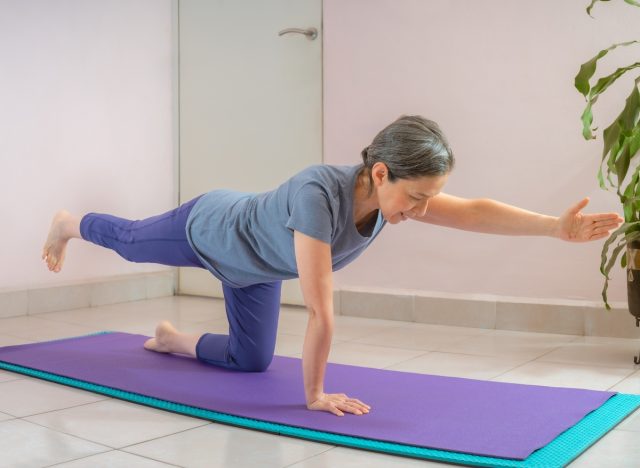
It’s a fact of life that balance becomes challenging with age. When your balance is compromised, you are at risk of falling and suffering from broken bones. Balance training should be incorporated into your workout a minimum of three times every week.
There are several balance training activities you can do that are beneficial. One is to simply stand on one foot and balance. Dr. Bohl adds, “You can also combine balance training with strength training—for example, standing on one foot while doing bicep curls. Or, you can combine balance training with flexibility training, such as taking a yoga class.”
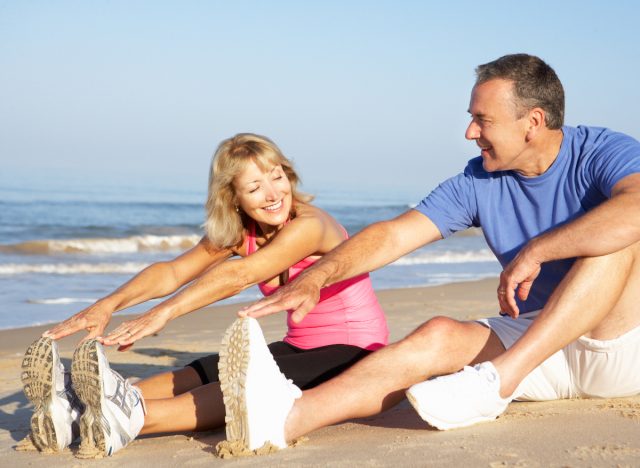
Old age is not really like an old friend. Your body can lose flexibility, and your joints can get stiff. Because of this, flexibility is important to work on to ensure your body remains limber.
Dr. Bohl shares, “Flexibility training includes stretching and should be done at the end of every other form of exercise. For example, after you finish your cardio workout or your strength-training workout, you should do about 15 minutes of stretching the muscles that you just used.”
